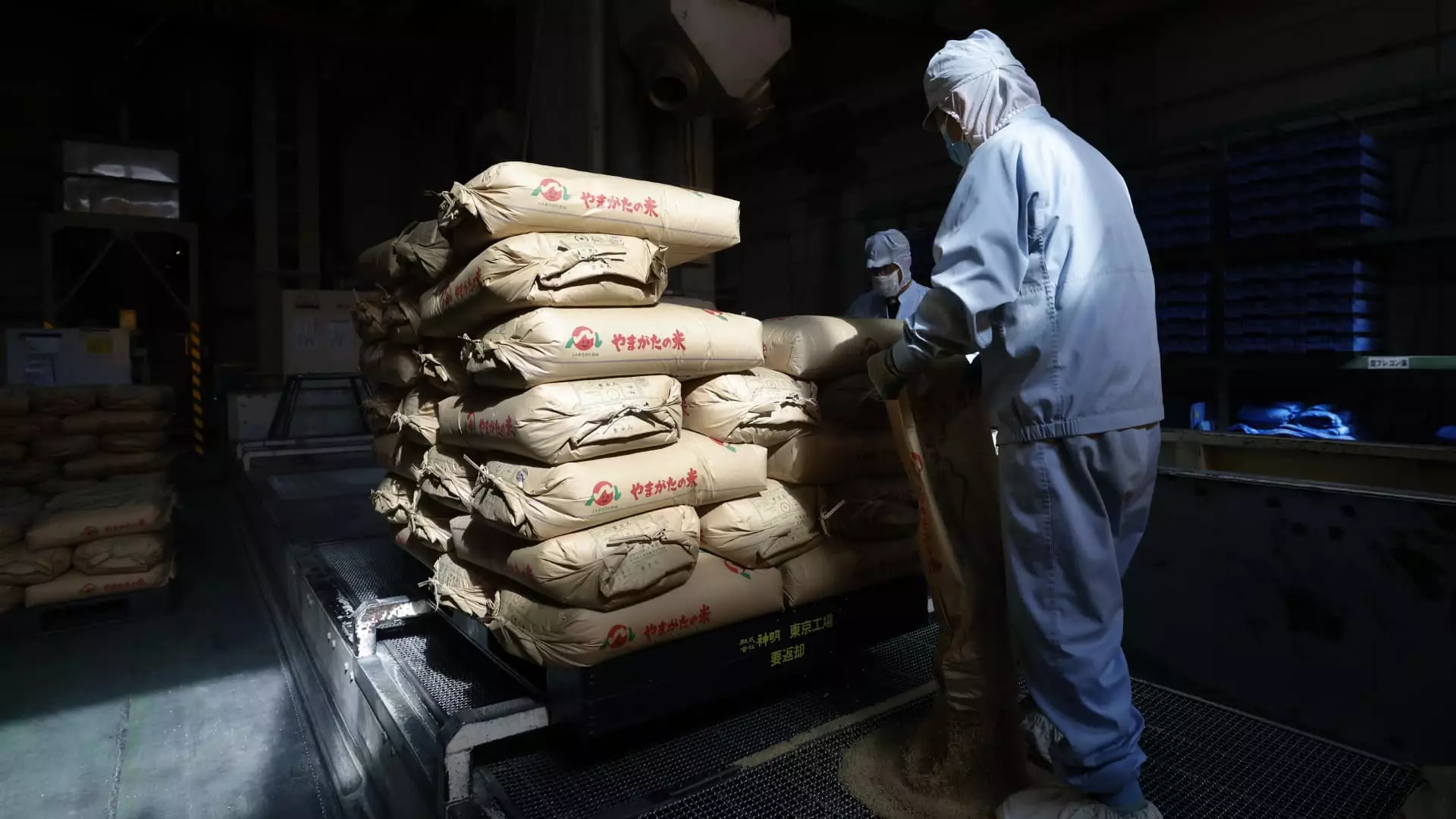In an alarming turn of events, rice prices in Japan have more than doubled in May, showcasing a staggering 101.7% increase year-over-year. This spike symbolizes more than just a hike in the cost of a staple food; it is a glaring indicator of the deep-seated issues plaguing Japan’s economy. The recent figures show that this is not an isolated incident; prices had already surged by 98.4% in April and 92.1% in March. The escalations reflect the volatility that not only manifests in pantry staples but also ripples through the broader economy, straining household budgets and stoking inflationary fears.
The timing of this price surge could not be worse. As Japan grapples with core inflation that climbed to an unsettling 3.7% in May—the highest since January 2023—there is a growing unease about the nation’s economic trajectory. Notably, economists had anticipated a slightly lower reading of 3.6%, making the actual numbers even more alarming. Agriculture and food markets stand at the forefront of this crisis, and rice—being a quintessential component of Japanese diets—takes center stage in these discussions. The government’s decision to release emergency stockpiles signals a desperate attempt to mitigate these adverse effects on consumers who are already feeling the pinch from rising costs across various sectors.
Government Interventions and the Critical Role of Rice
Marcella Chow, a Global Market Strategist at JP Morgan Asset Management, has underscored the crucial role that rice plays in Japan’s inflation landscape; a staggering 50% of core inflation can be attributed to this single commodity. The government’s emergency measures to stabilize rice prices could potentially provide a lifeline for household spending. Chow’s insights point to a silver lining: if price reductions trickle down to processed foods and restaurant offerings, consumers might soon experience a modicum of relief. However, this raises a pivotal question: will these interventions be sufficient, or are they merely a band-aid solution to a deeper economic wound?
The Macro-Economic Context: Factors at Play
The current economic landscape is troubled, as seen through the latest inflation figures and GDP contractions. Notably, Japan’s GDP shrank by 0.2% in the March quarter, a worrying sign as it marks the first quarterly contraction in a year. Export declines further complicate the situation, signaling that external demand is faltering at a time when domestic pressures are mounting. The Bank of Japan (BOJ)’s decision to maintain interest rates at a meager 0.5% in light of these developments indicates an institution still grappling with its role in fostering sustainable economic growth amid persistent inflationary trends.
BOJ Governor Kazuo Ueda’s statements in parliament hint at a cautious optimism among policymakers. However, there are conflicting narratives surrounding future inflation; while rising food prices seem to pose an ongoing threat, some experts, like Kei Okamura of Neuberger Berman, hold out hope that these pressures may ease in the coming months. Nonetheless, even if inflation does moderate, the structural issues—such as economic deceleration and international tensions—are likely to linger and cloud the horizon.
A Society on Edge: The Human Cost of Economic Instability
At its core, the rice price crisis is not merely an economic statistic; it translates directly into the lived experiences of everyday Japanese citizens. Families are facing tough choices as they scramble to manage tighter budgets amid this inflationary spiral. For many, rice is not just a dietary staple but a cultural emblem—its significance runs deeper than its nutritional value.
The spiral of rising prices affects not only individual households but extends its reach to the very fabric of society. Community restaurants may further raise their prices, while families may substitute more expensive items for cheaper alternatives, resulting in a potential crisis of nutrition. Japan’s demographic challenges compound these issues; an aging population coupled with a declining birth rate means that struggles to make ends meet will resonate across generations.
In these times of economic uncertainty, it becomes crucial to reassess and examine the underlying vulnerabilities of Japanese society. As rice prices roar, what does it mean for the national identity and the social contract in this island nation? The government’s response must go beyond short-term fixes and strive for sustainable solutions that address the systemic fragility evident in Japan’s agricultural dependencies and broader economic policies. The stakes are high, and the clock is ticking.



Leave a Reply